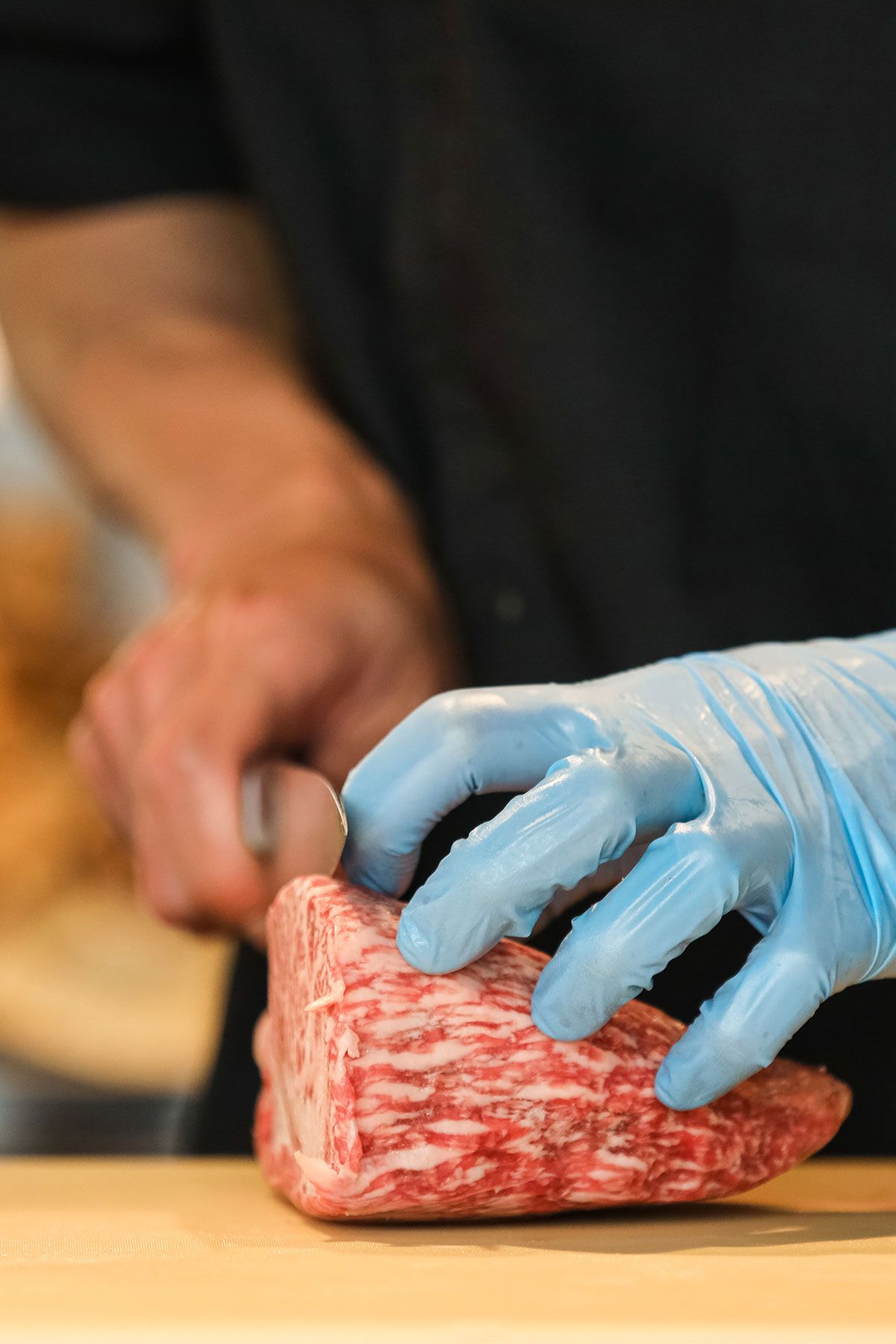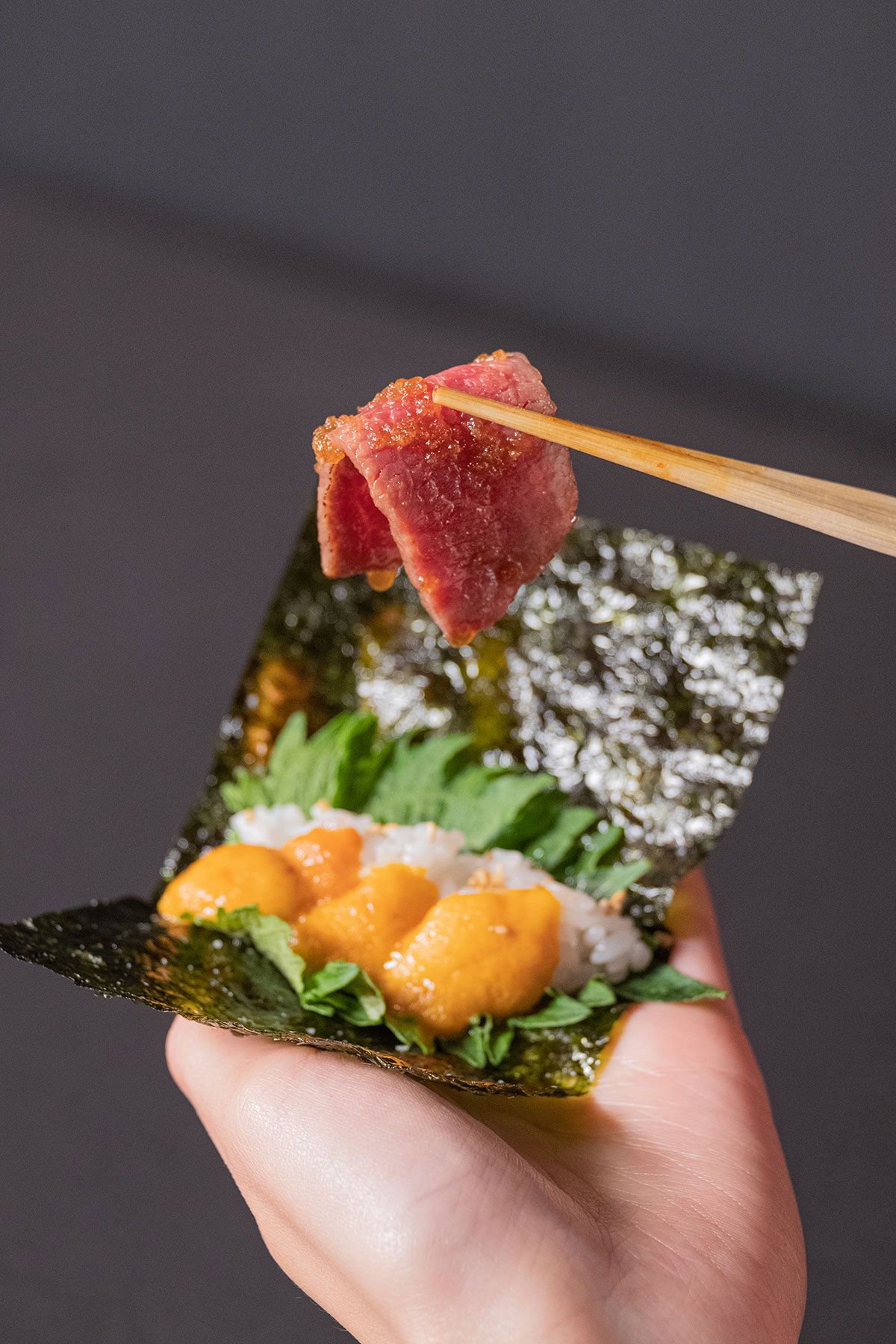Taking cues from Michelin-starred sister restaurant Tominokoji Yamagishi for a refined exploration of yakiniku cuisine
Hong Kong is no stranger to yakiniku restaurants, yet while many of them hew closely to the traditional model of serving course after unrelenting course of wagyu beef, few ever consider the boundaries to which the cuisine can be pushed. Enter Yakiniku Jikon, a new grilled meat restaurant opening in K11 Musea that takes a wealth of liberties with the medium, playing, twisting and piecing together yakiniku with other facets of Japanese cuisine to create something that is delightfully unique in an otherwise crowded market.
The restaurant comes from pedigree as an offshoot of the one-Michelin-starred Tominokoji Yamagishi in Kyoto. Both the original Tominokoji Yamagishi and its Hong Kong branch—just one floor below in K11 Musea—specialise in cha-kaiseki, a form of rarefied kaiseki haute cuisine that incorporates elements from the Japanese tea ceremony, of which chef-founder Takahiro Yamagishi is an ardent practitioner—alongside ikebana (flower arrangement) and calligraphy. Translating to 'now' in English, Jikon is Yamagishi's first foray into the world of grilled meat, and takes its name from a teaching of 13th-century Zen Buddhist philosopher-monk Dōgen Zenji.

Despite the restaurant's ultra-modern setting within the glass-colonnaded facade of K11 Musea's Sculpture Park and in spitting distance of a KAWS Companion sculpture, nods to the often austerity of the tea ceremony are present in the hewn tree trunk column at the entrance, the chashitsu-style booths, and the itamae-style eight-seat yakiniku bar that places the art of Japanese hospitality, or omotenashi, front and centre, much like a sushi bar would.
Manning the bar is yakiniku expert and okami (hostess), Hiromi Nomura, who trained at the Tokyo Meal Wholesale Market and previously held stints at the one-Michelin-starred Hiyama Tokyo and Yoroniku Ebisu. Taking into account the effects of temperature and humidity on the cuts of meat, Nomura has a deft hand in grilling Jikon's many offerings of A5 Kagoshima satsuma wagyu—sourced from a 100-year-old Tokyo meat supplier to adhere to a 'golden ratio' of meat, fat and umami, and lauded for its frost-like marbling that denotes a delicate balance in succulent fat and flavourful lean meat.
See also: How to Recreate the Yakinikumafia Wagyu Yakiniku Experience At Home




